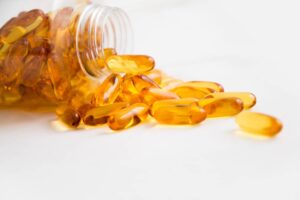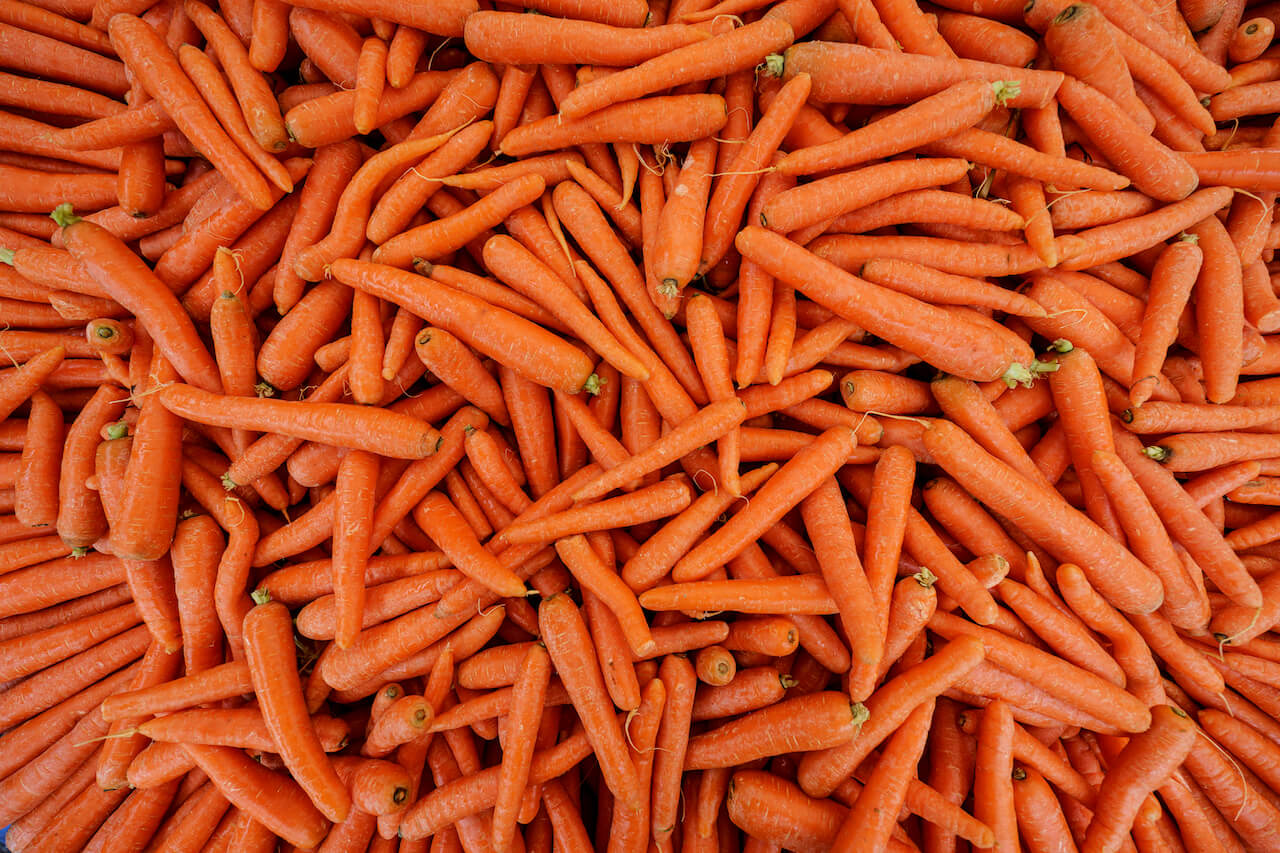If there is one supplement that most Nordics should be taking in addition to a balanced diet, it is vitamin D. The idea that we get everything we need for life from food is beautiful. Think again, when we make efforts to balance our diet and improve its quality and still someone comes along and tells us that we need to take some kind of supplement.
Vitamin D Benefits and Overview
 What's the matter? It's a vitamin that we simply don't get enough of from a balanced diet. You've probably heard that you can get vitamin D from the sun. True, but you need enough sun for this, and in our climate, especially in the winter, there tends to be little of it. This is also confirmed by several studies conducted in Estonia and the Nordic countries. It can be safely said that most of us are vitamin D deficient.
What's the matter? It's a vitamin that we simply don't get enough of from a balanced diet. You've probably heard that you can get vitamin D from the sun. True, but you need enough sun for this, and in our climate, especially in the winter, there tends to be little of it. This is also confirmed by several studies conducted in Estonia and the Nordic countries. It can be safely said that most of us are vitamin D deficient.
Every adult Estonian has probably heard about the importance of vitamin D, but what are the risks for those who are deficient in this important vitamin? The main risks are rickets in children and softening of bones in adults. However, more recent studies have found that the role of this important vitamin is much broader. Below is a list of the roles of vitamin D in the body.
Functions of vitamin D in the body:
- necessary for adequate absorption of calcium and phosphorus
- promotes the development of bones and teeth
- supports blood clotting and heart function
- reduces the risk of infection and diabetes
As you can see from this list, vitamin D is needed in many places besides bones. When it comes to bones, supplements that combine vitamin D with calcium have shown the best results.
Vitamin D in food
Vitamin D circulates mainly in two forms, D3 (cholecalciferol) and D2 (ergocalciferol). The former is produced by our skin in response to sunlight (UVB radiation) and is also obtained from some animal sources, such as fatty fish and eggs. Ergocalciferol is obtained from plant sources, such as some mushrooms and green leafy vegetables.
Rich sources of vitamin D (at least 2 μg/100 g)
- cod liver oil (220 μg/100 g)
- cod liver (54 μg/100 g)
- most cooked fish (especially herring and salmon, 16 and 14 μg/100 g respectively)
- boiled egg (2.9 μg/100 g)
The main source, however, is D3 synthesized by the body itself with the help of sunlight or dietary supplements. Eating enough fatty fish can also provide the necessary amount, but you should not rely solely on eggs, mushrooms, and leafy greens.
Vegetarians living in our climate have roughly two options to choose from: taking vitamin D supplements or going on sun trips several times a year.
When it comes to supplements, it should be noted that D2 of plant origin is less well absorbed than D3 of animal origin, while the risk of poisoning is higher. When planning a sun trip, it should be noted that vitamin D reserves last for about 2-3 months. So vegetarians who do not take supplements should ideally plan a sun trip for both late autumn and early spring.
Vitamin D needs and daily intake
 This is a big topic of debate. Estonian national dietary and physical activity recommendations give the following quantities:
This is a big topic of debate. Estonian national dietary and physical activity recommendations give the following quantities:
- Recommended daily intake for ages 6 months – 60 — 10 μg (400 IU)
- Recommended daily intake for ages 60+ — 20 μg (800 IU)
- Lower limit of consumption — 2.5 μg (100 IU)
- Upper limit of consumption — 100 μg (4000 IU)
These recommended amounts are intended for those who have normal vitamin D levels and need to maintain them. In Estonia, the normal range for vitamin D in the blood is considered to be 75–250 nmol/l, but a slightly more conservative estimate would consider the range to be 100–175 nmol/l.
Below 25 nmol/l can be considered a severe deficiency and above 250 nmol/l is considered too high. Poisoning occurs at levels of 375 nmol/l and above. Most Estonians have vitamin D levels below 75 nmol/l, even in the summer, which is clearly too low.
Vitamin D for babies and children
Getting enough vitamin D is important for babies and children to grow strong bones and for their immune systems to protect them from disease. Spending 15 to 30 minutes outside in the sun every day from early May to mid-September, with your hands and face exposed, stimulates the skin to produce all the vitamin D your child needs.
Vitamin D for babies from 6 months of age and children, the recommended daily amount is 10 μg (400 IU). In the Nordic latitudes (55°N–72°N), vitamin D deficiency can occur if it is not obtained in sufficient quantities from food. Infants can develop rickets and adults osteomalacia, which is why vitamin D is considered a micronutrient. Vitamin D enters the body through the absorption of sunlight and ingestion of food.
If in doubt, discuss your child's medical history and lifestyle with your pediatrician, and let them know about any medications and supplements your child is taking. The doctor can then determine your child's daily vitamin D needs.
Should I take vitamin D supplements daily and how much?
As mentioned, our body mainly supplies us with vitamin D3 itself, and for this we need sunlight. Specifically, UVB radiation, which is what makes us brown (or red). UVA radiation does not contribute to the production of vitamin D, so when we enjoy the sun through a window, our skin does not produce D3.
We need 15-20 minutes of sun a day on a sunny summer day, so that at least 25% of the body is exposed to the sun (e.g. arms and legs). Physicists from Tõravere have determined through measurements that we have the necessary amount of UVB radiation at best from the beginning of May to mid-September.
But from May to September, our vitamin D situation is not cloudless either. Getting a sufficient amount is limited by cloudy days, clothing, tanned skin, old age, heavy physical exertion, obesity and, of course, staying indoors during the day. Without supplements, only from the sun and food, it is difficult to get the necessary amount of vitamin D in the Nordic countries.
Vitamin D levels and testing
It is highly recommended to test your blood levels of vitamin D once a year. If you do not want to or cannot have a vitamin test, it is recommended that all adults take 25–50 μg (1000–2000 IU) of vitamin D3 supplements from November to March.
What if you have your vitamin D level measured, but the result is below 100 nmol/l or even below 75 nmol/l? In this case, you should definitely consult your family doctor. In general, in this case, the daily dose should be increased to at least 50 μg (2000 IU). After a few months, the vitamin D level should be checked again and the daily amount adjusted if necessary. When consuming doses approaching or exceeding the upper limit of vitamin D intake (100 μg or 4000 IU per day), it is essential to monitor the vitamin D level in the blood every month.
Vitamin D deficiency and symptoms that indicate it
Vitamin D is important for keeping the immune system strong and maintaining a good mood. A lack of vitamin D can cause a number of symptoms, and if they occur, you should consider taking a supplement. The symptoms of vitamin D deficiency overlap with the symptoms of many modern diseases.
Some symptoms and signs of vitamin D deficiency:
- muscle weakness
- fatigue
- frequent infections
- depression
- coronal pains, etc.
Whether vitamin D deficiency is a cause or a consequence of any of these chronic diseases has not yet been confirmed by research. However, there are indications that vitamin D deficiency is associated with poorer overall health. Namely, it is hypothesized that vitamin D levels may be reduced by inflammatory processes associated with diseases.
Low Vitamin D levels are associated with poor muscle function, the spread of several cancers (including colorectal cancer, breast cancer, prostate cancer, and pancreatic cancer), blood pressure levels and hypertension, and also type 1 and type 2 diabetes, but the evidence is not yet so convincing that we can be completely sure.
Vitamin D intake is also associated with body weight, infectious diseases, and multiple sclerosis, but there is still too little data on these relationships.
With this lack of data and insufficient evidence, one may legitimately wonder whether vitamin D is really as important as it is being touted. If rickets and softening of bones don't seem important enough to you, then fatigue, weakness, depression, and generally poorer health might.
Vitamin D overdose and side effects
Vitamin D is fat-soluble and if consumed in excess, the body stores excess, which can lead to poisoning if consumed over a long period of time. Poisoning cases are mainly associated with excessive consumption of the vitamin in the D2 form. In cases of poisoning related to vitamin D3, more than 1000 μg (40,000 IU) per day has been consumed over a long period of time.
Vitamin D as drops, spray, oil, capsule?
Although there is some controversy, research shows that there is little difference between taking vitamin D as drops, spray, oil, or capsules. It is important to take it with food, as this increases the absorption of vitamin D into the body.
Summary
Studies conducted in Estonia and Nordic studies show that most adults have blood levels of vitamin D below 75 nmol/l, which indicates that most of us are not getting enough from food and sunlight. A test should be done at least once a year and, if necessary, take vitamin D supplements. A study of young Estonian men showed that 30 μg (1200 IU) of extra vitamin D per day was not enough to raise the vitamin levels above 75 nmol/l in those who were too low.

Allan Randlepp
NutritionistAllan is a nutritionist and trainer whose favorite topics are lifestyle and longevity, including nutrition and physical activity.
Dopamine – happiness or addiction?





